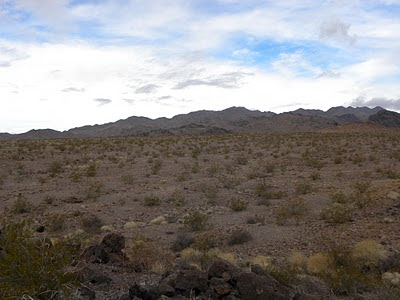New Energy Frontier: A Five Step Plan

What a week for solar companies! They've developed a great process for profiting from one of the most destructive uses of public lands, and looking good in the process. How did we end up with a renewable energy industry that jeopardizes more of our natural resources than it will save? And how did the Obama Administration come up with the Cheney-esque phrase "New Energy Frontier"? Read on... Here is the secret to Big Solar success: Step 1.) Propose bulldozing pristine public lands to make way for solar panels.
Step 2.) Come to an agreement with national environmental groups to make it all look "green".
Step 3.) Win approval from Secretary of Interior Kenneth Salazar. This is all "green" energy, so that should be easy. Destroying hundreds of square-miles of public lands, putting up miles of new transmission lines, and funneling billions of dollars to energy companies is part of the Obama Administration's "New Energy Frontier...



